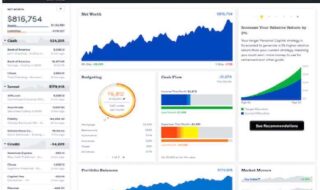In the digital age, geo-mapping services have become essential for applications ranging from logistics and transportation to travel and fitness. Central to these services is the Distance Matrix API, a tool that calculates distances and travel times between multiple points. However, the cost of implementing such a tool can be a barrier for many businesses. To overcome this challenge, it is crucial to understand the pricing structure of Distance Matrix APIs and explore affordable solutions.
A typical Distance Matrix API pricing model is usage-based. Businesses pay according to how many requests their application makes to the API. This can range from a few cents per request to several dollars, depending on the provider. Some providers also offer a tiered pricing model, where the cost per request decreases as the volume of usage increases. In addition, businesses may incur extra charges if they use advanced features, such as real-time traffic data or complex routing calculations.

Understanding this pricing structure can help businesses make informed decisions about which Distance Matrix API to use. For startups and small businesses, for example, it may make sense to start with a basic, low-cost API and upgrade as their needs and budget grow. On the other hand, large enterprises with high-volume needs may find that a premium API with advanced features provides better value for money.
Contents
- Optimal Resource Allocation: Balancing Cost and Functionality by Choosing the Right Distance Matrix API Tier
- Evaluating Value: How Distance Matrix API Pricing Aligns with the Benefits It Offers to Your Application
- Affordability in Action: Real-Life Use Cases Showcasing the Value of Budget-Friendly Distance Matrix API Choices
Optimal Resource Allocation: Balancing Cost and Functionality by Choosing the Right Distance Matrix API Tier
When considering distance matrix pricing, it’s essential to strike a balance between cost and functionality. The right Distance Matrix API tier should offer the necessary features for your application without breaking the bank.
To achieve this balance, begin by identifying your application’s specific needs. For instance, if you’re building a basic navigation app, you may only need an API that provides point-to-point distances and travel times. However, if your app involves complex logistics, such as route planning for a fleet of vehicles, you may need an API that supports advanced features like traffic data and multi-point routing.
Once you’ve identified your needs, compare the offerings of different Distance Matrix API providers. Look at their pricing tiers, the features they include, and any additional charges for advanced features or high-volume usage. Consider also the reliability and accuracy of their data, as these can impact the functionality of your application.
Lastly, consider your budget. While it’s important to choose an API that meets your needs, it’s equally important to ensure that the cost fits within your budget. Remember, the goal is to find an affordable solution that offers good value for money, not just the cheapest option.
Evaluating Value: How Distance Matrix API Pricing Aligns with the Benefits It Offers to Your Application
When evaluating distance matrix pricing, it’s crucial to consider not only the cost but also the value that the API brings to your application. This value can be manifested in several ways.
Firstly, a Distance Matrix API can enhance the functionality of your application. By providing accurate and up-to-date distance and travel time data, it can power features like navigation, route planning, and travel time estimation. These features can greatly improve the user experience of your application, making it more useful and attractive to users.
Secondly, a Distance Matrix API can contribute to the efficiency of your operations. If your business involves logistics or transportation, for example, a good API can help optimize routes and schedules, reducing travel times and fuel costs. This can translate into significant savings and a more competitive edge for your business.
Finally, a Distance Matrix API can generate valuable insights for your business. By analyzing the distance and travel time data, you can gain a better understanding of your operations and identify areas for improvement. These insights can guide your decision-making and strategy, driving growth and profitability.
Affordability in Action: Real-Life Use Cases Showcasing the Value of Budget-Friendly Distance Matrix API Choices
To illustrate the value of budget-friendly Distance Matrix API choices, let’s consider some real-life use cases.
One example is a startup that developed a food delivery app. By using a cost-effective Distance Matrix API, the startup was able to provide real-time delivery estimates and optimize delivery routes. This not only improved the user experience but also increased the efficiency of their operations, leading to higher customer satisfaction and lower operational costs.
Another example is a logistics company that used a Distance Matrix API to plan routes for its fleet of trucks. The API helped the company reduce travel times and fuel consumption, resulting in substantial cost savings. Moreover, the API proved to be a worthwhile investment, as the savings it generated far outweighed its cost.
These use cases highlight the potential value of affordable Distance Matrix API choices. By understanding the pricing structure and choosing the right tier, businesses can derive significant benefits from these tools without breaking the bank.
In conclusion, distance matrix pricing need not be a barrier to implementing geo-mapping services in your application. By understanding the pricing structure, balancing cost and functionality, and evaluating the value that a Distance Matrix API brings, you can find an affordable solution that meets your needs and provides good return on investment. So, explore your options and make an informed decision that will drive the success of your application and business.



